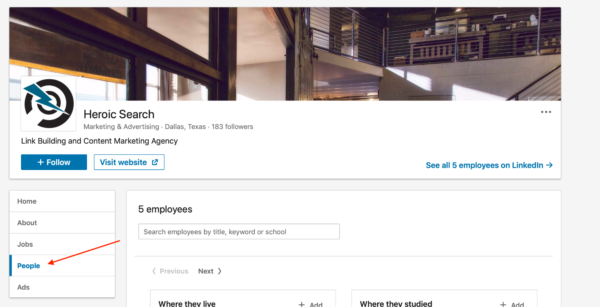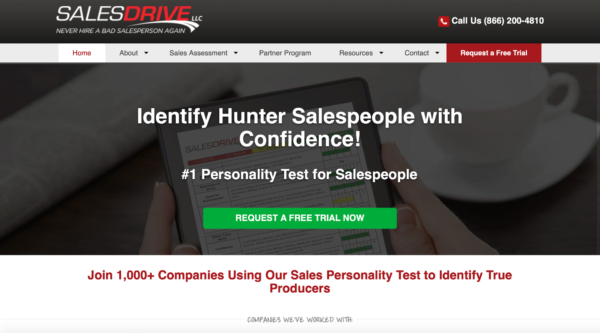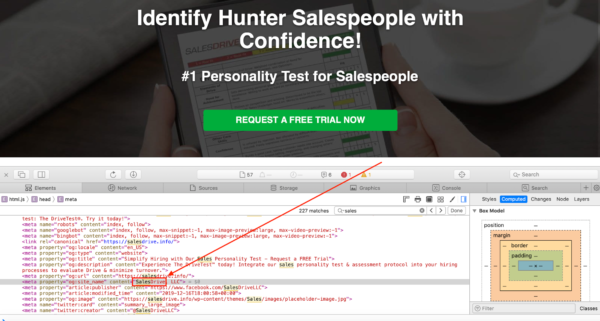There’s no question that link building is the hardest part of SEO.
While Google’s ranking factors change all the time, links are still one of the top. And when it comes to earning these links, even if you create the best linkable asset on the planet, you need to conduct outreach.
Going about outreach the wrong way can be costly. If you treat it only as a game of numbers and don’t pay attention to the details involved, you’re likely to end up with very few, if any, good backlinks.
As a freelancer, I’ve been conducting link building outreach for almost 8 years now. I have experience running all sorts of campaigns, including the famous Skyscraper Technique, guest post outreach, resource pages – you name it.
As a website owner, however, I’ve been on the receiving end of link building emails as well. I can tell you that most link building emails are bad.
Based on the emails I’ve sent and received, here are 5 things you can do to improve your link building success rate.
1. Narrow your focus
One of the common mistakes I see link builders make is sending irrelevant emails. This is digital marketing 101, but unfortunately many link builders don’t always have that mindset.
This doesn’t mean they necessarily wrote a bad email. It’s usually a side effect of focusing their efforts too broadly.
If they’re pitching an article about a general business topic, like “10 ways to grow your business on social media,” but they pitch a music blog that happens to talk about marketing tips for musicians, the article just isn’t a fit.
It’s clear how the person found the site – they looked for any site that talks about business. However, for your emails to be effective, you need to take things a step further and look for sites that write to an audience that is interested in the content you’re pitching.
This is how you interest editors of a site. Their job is to keep their readers happy and engaged, so if you’re pitching something that their readers are going to enjoy, you’ll have much better luck.
So instead of prospecting based on specific keywords, like the “business” example above, find prospects based on the interests of their audience. Ask yourself what readers of the sites you’re looking at are interested in, and if that interest aligns with the content you’re pitching.
This is much more effective than simply seeing that a site wrote about a somewhat related topic.
2. Email the right person
If you email the wrong person, you can bet you won’t receive a response for your link building email.
So, how do you know who to email?
While it varies depending on the site you’re contacting, I usually follow a hierarchy like this:
- Editor
- Content Manager
- Content Marketing Manager
- Digital Marketing Director
- SEO Manager
When looking for these people, you can usually leverage LinkedIn. Just type the company name in the LinkedIn search box, then head over to the “people” section once you find the right one.

Once you find the right contact, you can use tools like Hunter.io, ContactOut or RocketReach to find their email address.
If you really can’t find a person behind the content, then sending a templated email to a generic email address is fine. They probably only get these types of unpersonalized emails anyway.
3. Segmenting your prospect list into tiers
When it comes to any sort of cold email campaign, it’s important to segment your list into low and high-value prospects.
This is so that you can spend the right amount of time on each type of prospect.
For smaller sites, a cold email will probably work. However, massive sites, like Business Insider or Huffington Post, require a bit more work to get in touch with the editors.
Because of this, I segment my prospects based on their domain authority – like this:
- Tier 1: DA 25 – 35
- Tier 2: DA 36 – 65
- Tier 3: DA 66 – 100
By doing this, you can apply different methodologies for each tier based on their required level of effort. Which brings us to the next point…
4. Warm up your prospects before reaching out
Pitching completely cold can work if you have a massive list of prospects, but with the low response rate of cold email, you’re likely to burn through your prospects quickly – especially with something like link building where, let’s face it, the value proposition is mostly one way.
Some prospects are fit for a completely cold email, like the tier 1 sites above, but for the super high-value ones, I like to warm them up a bit first.
Here’s how I approach the warm-up process for each tier of prospects when I execute a link building campaign:
- Tier 1 sites:
- Completely templated cold email.
- Tier 2 sites:
- Heavily personalized cold email with unique opening and closing sentences.
- Tier 3 sites:
- 2 blog comments.
- Follow on social media.
- 3 social media interactions (such as a Twitter comment, retweet, etc.).
- Heavily personalized cold email with unique opening and closing sentences.
5. Avoid common spelling and email formatting mistakes
A common mistake I see link builders make is that they send out emails that feel templated.
The 3 ways link builders fall into this issue are:
- Introducing emails with the word “there” as their fallback text (for example, if they don’t have my name, the email would say “Hi there,” instead of “Hi Nick,”).
- Misspelling the brand name of the company or site they’re emailing me about.
- Being overly generic with their “personalization.”
Let’s go over how to fix each of these.
Don’t use “there” as your fallback text for a name
Most email outreach software lets you include what’s known as fallback text if you don’t have the name of a prospect. Popular tools like MailShake show this feature as showing people they can enter the word “there” into the fallback text field for the first name merge tag.
The problem with this is that, on the recipient end of this, the email feels super generic and templated.
The way I fix this is pretty simple. Instead of saying “Hi” then entering my merge tag with “there” as the fallback, I say “Hey” and use “guys” as my fallback. It’s a bit more casual, but it comes off as less generic and templated.
You can also adapt your introduction based on the position of the contact you’re emailing. For example, if you’re emailing an editor of a news outlet, you can introduce your email with “Dear OUTLET Editor.” This is more formal, but news outlets are used to receiving more formal emails.
Get the brand name right during your prospecting
Sometimes, a brand name can be difficult to assess. If you look at a site like this, it’s hard to tell what the proper syntax is for the brand name.

Is it…
- SalesDrive?
- Salesdrive?
- Sales Drive?
With the logo alone, there’s no way to know.
However, if you inspect the code of the site, you can usually find out the proper syntax of a site’s brand name by looking in the HTML.

Bingo!
Don’t fake your personalization
The biggest indicator of a templated outreach email is generic personalization.
Things like “I’m an avid reader of your blog. Your content is always so inspiring. Great work!” tell me that the person emailing me obviously didn’t read anything. To me, this is a very dishonest way to approach personalization.
My parents always told me “If you don’t have anything nice to say, don’t say anything.” That holds true with email personalization.
If your personalization isn’t specific about something you found out about your prospect during your research, just leave it out. It’s much better to just tell them what you want and be honest in your email than attempting to win them over with fake compliments.
However, rather than not personalizing at all, I’d recommend writing the first sentence of every email by hand for your most valuable prospects. This does take more time, but the increased response rate makes it worth it.
Conclusion
As a link builder and a recipient of too many link building emails, I’m on both ends of things. I know for a fact that paying attention to the details of your prospecting and outreach work will make a massive difference in your ability to secure high quality backlinks for your site.
Leave A comment
Your email address will not be published

Comments: